High tech developer IBM (NYSE:IBM) of Armonk, NY, has been suffering some business setbacks as of late. It’s most recent earnings release for the fourth quarter of 2015 showed that the company experienced its 15th-straight quarter of declining sales. The company’s revenues through the end of 2015 were $81.7 billion, which is one percent less than IBM’s total revenues in 2014. Despite corporate troubles, IBM remains alone atop the world of patents, receiving the most U.S. patents of any company during 2015, the 23rd consecutive year that it has maintained that title. The 7,355 U.S. patents earned by IBM during 2015 was less than the total number of patents it earned in 2014 (7,481 patents), however. Charts attached to IBM’s fourth quarter earnings report show that the company is investing six percent of its revenue into research and development.
Despite shrinking revenues, IBM may be able to chart its way back to stability if success continues for its Watson cognitive computing platform, the corporation’s fastest growing division by revenues and one which is proving applicable to a surprising range of industries. Last September, we reported on Israeli-based Teva Pharmaceuticals (NYSE:TEVA) becoming the first major corporate partner in IBM’s Watson Health platform, which provides data analytics for developing better patient treatments. In 2015, IBM made a series of acquisitions to improve its business portfolio in image management and cloud-based healthcare intelligence. In the automotive sector, IBM’s exhibition at the recent North American International Auto Show showcased Watson providing assistive driving and entertainment recommendation services for drivers. Sports clothing developer Under Armour (NYSE:UA) recently announced that it would incorporate Watson artificial intelligence tech into its wearable fitness tracking options. Watson is even being applied to the wine industry, helping private winemaker E&J Gallo Winery develop a new irrigation system for using less water to grow grapes.
IBM Patents for Data Analytics: Shape-Based Data Mining and Medical Diagnostic Evaluations
To profile IBM’s recent research and development related to Watson, we thought that we’d profile a series of data analytic and predictive modeling technologies for which IBM has been issued patents. U.S. Patent No. 9230060, titled Associating Records in Healthcare Databases with Individuals, describes a technology that would likely be utilized by Watson Health. It protects a method of associating healthcare records in healthcare databases with an individual by locating an attribute type in a first record in a database and similar attribute types in second records in other databases, comparing the attribute types, determining weighted scores for each attribute which indicates the likelihood that an attribute type is associated with the individual, calculating confidence scores based on all weighted scores and updating the databases based on the confidence score outputs. This invention serves a need for generating combined patient records that can be relied upon when providing healthcare to a patient.
The evaluation of medical diagnoses for 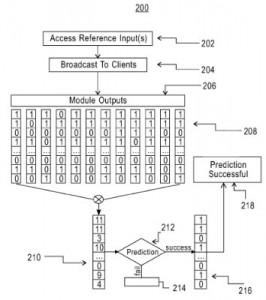 accuracy is detailed within U.S. Patent No. 9235808, entitled Evaluation of Predictions in the Absence of a Known Ground Truth. It claims a method to evaluate a prediction that a patient has a given disease by collecting a plurality of clinical data from each patient of a cohort of patients, providing a plurality of research modules with inputs for receiving clinical data and outputs for binary vectors indicating that a patient has a given disease, accessing a particular binary vector wherein it is unknown if the binary vector indicates that a patient has the disease, accessing a subsample of the binary vectors which possibly includes the particular binary vector, determining a consensus prediction that a patient has the disease based on the subsample and ranking each binary vector in order of closest proximity to the consensus prediction. The patent’s background section also describes the technology’s usefulness in assessing the quality of complex workflows utilized in research and development activities.
accuracy is detailed within U.S. Patent No. 9235808, entitled Evaluation of Predictions in the Absence of a Known Ground Truth. It claims a method to evaluate a prediction that a patient has a given disease by collecting a plurality of clinical data from each patient of a cohort of patients, providing a plurality of research modules with inputs for receiving clinical data and outputs for binary vectors indicating that a patient has a given disease, accessing a particular binary vector wherein it is unknown if the binary vector indicates that a patient has the disease, accessing a subsample of the binary vectors which possibly includes the particular binary vector, determining a consensus prediction that a patient has the disease based on the subsample and ranking each binary vector in order of closest proximity to the consensus prediction. The patent’s background section also describes the technology’s usefulness in assessing the quality of complex workflows utilized in research and development activities.
IBM’s cognitive technologies for automotive entertainment includes the invention discussed within U.S. Patent No. 9235198, titled System and Method for Using Biometrics to Predict and Select Music Preferences. It claims a method for using biometrics to select music preferences for a user in a vehicle by monitoring the vehicle for an input signal from a sensor, determining whether a music selection is being played, interpreting the sensor input to predict if the input indicates satisfaction with the music selection, categorizing the music selection as one the user likes or dislikes based on the input interpretation and playing another music selection in response to the determination that an input signal indicates dissatisfaction with the music selection being played. Characteristics monitored by the sensor input could include pulse rate, body temperature, facial expression or body movement.
 The analysis of data from a network of sensors for the predictive monitoring of weather events is at the center of U.S. Patent No. 9229132, which is titled Meteorological Parameter Forecasting. It discloses an article of manufacture which embodies computer-readable instructions for analyzing geographically distributed sensor network data across two sensors within a first geographic region to assess spatial and temporal variation of real-time cloud movement, determining a correlation across two sensors by identifying spatial and temporal evolution of the cloud movement, determining a cloud movement speed and determining a directional pattern of the cloud movement. This sensor network system can be implemented via solar panels, which provide a higher resolution for tracking spatial and temporal data than conventional satellite imaging systems.
The analysis of data from a network of sensors for the predictive monitoring of weather events is at the center of U.S. Patent No. 9229132, which is titled Meteorological Parameter Forecasting. It discloses an article of manufacture which embodies computer-readable instructions for analyzing geographically distributed sensor network data across two sensors within a first geographic region to assess spatial and temporal variation of real-time cloud movement, determining a correlation across two sensors by identifying spatial and temporal evolution of the cloud movement, determining a cloud movement speed and determining a directional pattern of the cloud movement. This sensor network system can be implemented via solar panels, which provide a higher resolution for tracking spatial and temporal data than conventional satellite imaging systems.
The analysis of shapes used in design specifications, layouts and more is featured by U.S. Patent No. 9235601, which is titled Data Mining Shape Based Data. It protects a method for data mining shape based data by receiving shape data for each of a plurality of data entries, creating a first abstract comprising a graphic illustration of a detected error location on a semiconductor chip from the shape data, organizing the abstracts into a plurality of groups based on the location of the detected error, creating a second abstract for each data entry based on the shape of the detected error and determining a correlation between each data entry based on the second abstract. This innovation is designed to address issues related to the large quantity of data produced when trying to detect errors in semiconductor fabrication.
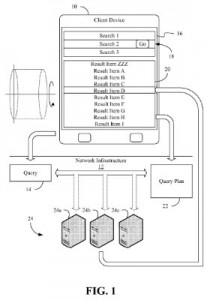 Techniques for optimizing the management of queries submitted simultaneously by many users to a single enterprise are discussed within U.S. Patent No. 9229981, which is titled Smart Query Plan with Visual Optimizations to Improve Responsiveness. It discloses a computer program product having computer usable code stored on a computer-readable storage medium and executable to identify visualization characteristics of a user interface associated with an application on a client device, receive a query from the application, generate a query plan based on the visualization characteristics and network infrastructure performance, select a number of elements in a responsive data set for the query plan and generate a response to the query based on the query plan. This innovation is intended to help enterprise applications quickly fetch data in response to user queries without overloading a network infrastructure during peak query times.
Techniques for optimizing the management of queries submitted simultaneously by many users to a single enterprise are discussed within U.S. Patent No. 9229981, which is titled Smart Query Plan with Visual Optimizations to Improve Responsiveness. It discloses a computer program product having computer usable code stored on a computer-readable storage medium and executable to identify visualization characteristics of a user interface associated with an application on a client device, receive a query from the application, generate a query plan based on the visualization characteristics and network infrastructure performance, select a number of elements in a responsive data set for the query plan and generate a response to the query based on the query plan. This innovation is intended to help enterprise applications quickly fetch data in response to user queries without overloading a network infrastructure during peak query times.
Patent Applications of Note: Product Recommendation Engines and Question Answering via Social Contacts
Cognitive computing technologies for the improvement of search and recommendation engines were featured in a couple of IBM patent applications that we found in our recent survey, including U.S. Patent Application No. 20160004703, titled Method for Modifying and Ranking Searches with Actions Based on Prior Search Results and Actions. It discloses a method of determining an action associated with web content, receiving user input identifying search criteria, determining whether the search criteria is associated with the web content and presenting search results associated with search criteria and a user interface for initiating the action with respect to the search results. This innovative results ranking technology reduces the need to manipulate search results by incorporating search criteria used in previous search queries. A recommendation engine developed to encourage consumers to spend gift card balances is detailed within U.S. Patent Application No. 20160005096, which is titled 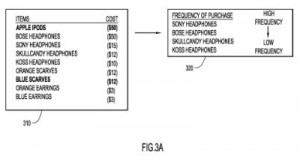 Product Recommendation Engine Based on Remaining Balance in a Stored-Value Scenario. It discloses a system with a processor configured to determine a remaining redeemable balance for a user based on a cost of selected items, identify items of interest to the user based on the cost of each item in relation to the remaining redeemable balance, rank the items of interest based on a sum of the cost of the items of interest and enable electronic purchase of the identified items of interest via the remaining redeemable balance. This invention is designed to get customers to spend remaining balance on a gift card before it expires.
Product Recommendation Engine Based on Remaining Balance in a Stored-Value Scenario. It discloses a system with a processor configured to determine a remaining redeemable balance for a user based on a cost of selected items, identify items of interest to the user based on the cost of each item in relation to the remaining redeemable balance, rank the items of interest based on a sum of the cost of the items of interest and enable electronic purchase of the identified items of interest via the remaining redeemable balance. This invention is designed to get customers to spend remaining balance on a gift card before it expires.
Enhanced analytics for monitoring the deployment of software instances to gain additional insight about the monitored environment is an important feature of the invention outlined within U.S. Patent Application No. 20160004848, titled Obtaining Software Asset Insight by Analyzing Collected Metrics Using Analytic Services. This patent application would protect a method of discovering a plurality of software instances deployed in a monitored environment, collecting metrics associated with the plurality of software instances, providing the collected metrics to a first analytic service to generate analytic information about the plurality of software instances and obtaining the analytic information from the service. This enhanced monitoring system helps to ensure that all deployed software instances are properly licensed and that the appropriate licensing fees have been paid for those instances. The mining of policy data sources in an enterprise IT scenario is improved by the technology explained within U.S. Patent Application No. 20160004730, entitled Mining of Policy Data Source Description Based on File, Storage and Application Meta-Data. It would detect a method for determining discrete policy target groups for information objects stored in an enterprise IT system by providing cleansed information about information objects stored on the system, determining criteria for sorting the information objects, carrying out initial sorting of the information objects to generate an initial list of clusters, clustering the information objects into discrete policy target groups based on the information objects and set of clusters and computing human-understandable names and definite descriptions for policy target groups. This approach to managing policy data sources is more effective at scaling up for enterprise environments when criteria for defining infosets are not known in advance.
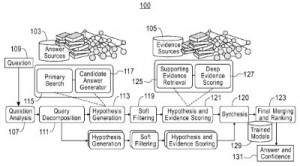 Watson’s question answering abilities have been well documented and IBM is trying to improve its IP holdings in related technologies with the filing of U.S. Patent Application No. 20160005325, titled System and Method for Domain Adaptation in Question Answering. It claims a method for providing adaptation to a question answering system by submitting a set of questions to the question answering system, receiving a set of answers generated in response to the questions, comparing the received set of answers to a question-answer set and generating an estimate of how much more training data for each of a plurality of question types and answer types. This technology is capable of adapting a question answering system in response to a new domain found in a question set. The analysis of social media data to improve question answering systems would be protected by U.S. Patent Application No. 20160006682, titled Utilizing Social Networks for Problem Solving. It would protect a method for utilizing social networks for answering questions by receiving information detailing a question, dividing the question into first and second question statements, transmitting the question segments to a social media contact based on that contact’s expertise and receiving responses to each segment. This system provides a better method through which users can leverage their social networks to find the answers they’re seeking to difficult problems.
Watson’s question answering abilities have been well documented and IBM is trying to improve its IP holdings in related technologies with the filing of U.S. Patent Application No. 20160005325, titled System and Method for Domain Adaptation in Question Answering. It claims a method for providing adaptation to a question answering system by submitting a set of questions to the question answering system, receiving a set of answers generated in response to the questions, comparing the received set of answers to a question-answer set and generating an estimate of how much more training data for each of a plurality of question types and answer types. This technology is capable of adapting a question answering system in response to a new domain found in a question set. The analysis of social media data to improve question answering systems would be protected by U.S. Patent Application No. 20160006682, titled Utilizing Social Networks for Problem Solving. It would protect a method for utilizing social networks for answering questions by receiving information detailing a question, dividing the question into first and second question statements, transmitting the question segments to a social media contact based on that contact’s expertise and receiving responses to each segment. This system provides a better method through which users can leverage their social networks to find the answers they’re seeking to difficult problems.
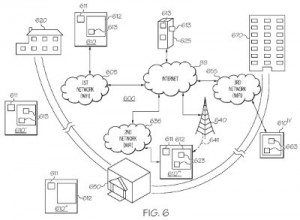 Predictive analytics to improve the use of media files stored on a mobile device are described within U.S. Patent Application No. 20160014194, titled Predictive Management of Offline Storage Content for Mobile Applications and Optimized Network Usage for Mobile Devices. It discloses a method for controlling media files in a mobile device by predicting a future usage of the media files; ranking each media file according to a likelihood that a media file is to be consumed at a time and location associated with predicted future usage, preemptively downloading the media files to a local data storage of the mobile device and consuming the previously downloaded media file at the time and location associated with the predicted future usage. This invention optimizes network usage costs by enabling the consumption of streaming media files from services like Spotify or Pandora while transitioning to a low-cost network connection which has become available.
Predictive analytics to improve the use of media files stored on a mobile device are described within U.S. Patent Application No. 20160014194, titled Predictive Management of Offline Storage Content for Mobile Applications and Optimized Network Usage for Mobile Devices. It discloses a method for controlling media files in a mobile device by predicting a future usage of the media files; ranking each media file according to a likelihood that a media file is to be consumed at a time and location associated with predicted future usage, preemptively downloading the media files to a local data storage of the mobile device and consuming the previously downloaded media file at the time and location associated with the predicted future usage. This invention optimizes network usage costs by enabling the consumption of streaming media files from services like Spotify or Pandora while transitioning to a low-cost network connection which has become available.

![[IPWatchdog Logo]](https://ipwatchdog.com/wp-content/themes/IPWatchdog%20-%202023/assets/images/temp/logo-small@2x.png)

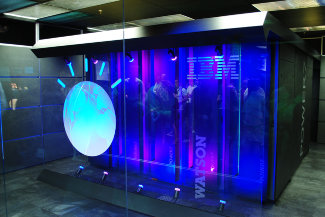
![[[Advertisement]]](https://ipwatchdog.com/wp-content/uploads/2023/01/2021-Patent-Practice-on-Demand-1.png)
![[Advertisement]](https://ipwatchdog.com/wp-content/uploads/2024/04/Artificial-Intelligence-2024-REPLAY-sidebar-700x500-corrected.jpg)
![[Advertisement]](https://ipwatchdog.com/wp-content/uploads/2024/04/UnitedLex-May-2-2024-sidebar-700x500-1.jpg)
![[Advertisement]](https://ipwatchdog.com/wp-content/uploads/2024/04/Patent-Litigation-Masters-2024-sidebar-700x500-1.jpg)

![[Advertisement]](https://ipwatchdog.com/wp-content/uploads/2021/12/WEBINAR-336-x-280-px.png)
![[Advertisement]](https://ipwatchdog.com/wp-content/uploads/2021/12/2021-Patent-Practice-on-Demand-recorded-Feb-2021-336-x-280.jpg)
![[Advertisement]](https://ipwatchdog.com/wp-content/uploads/2021/12/Ad-4-The-Invent-Patent-System™.png)






Join the Discussion
No comments yet.